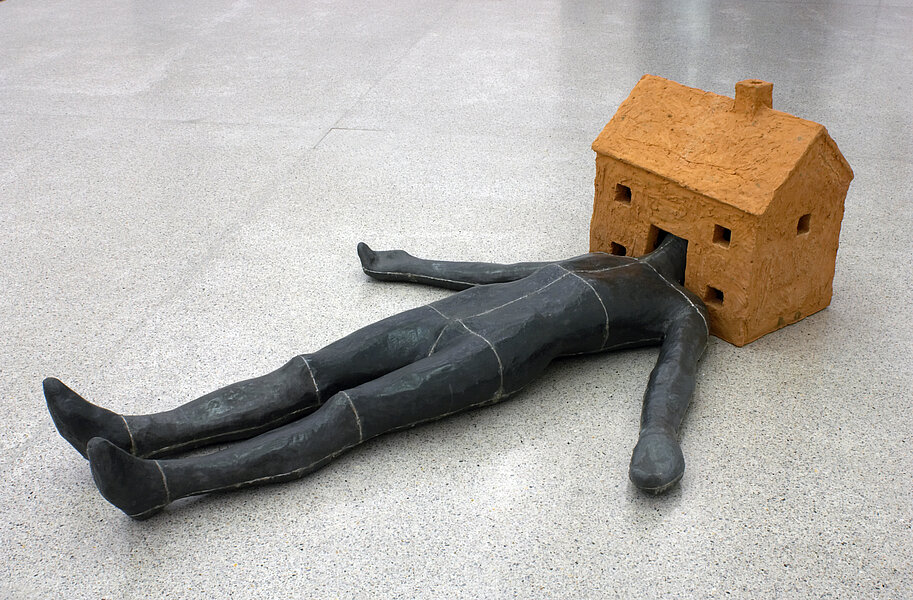
Gormley, Antony
Home
1984
| Object description | Lead, terracotta, plaster, fiberglass |
|---|---|
| Object category | plastic |
| Material |
Lying Figure:
lead
Cottage:
terracotta
Object:
gypsum,
fiberglass
|
| Technique |
Cottage:
pottery techniques
|
| Dimensions |
Object:
height: 62 cm,
width: 149 cm,
depth: 216 cm
|
| Year of acquisition | 2000 |
| Inventory number | ÖL-Stg 394/0 |
| Creditline | mumok - Museum moderner Kunst Stiftung Ludwig Wien, Leihgabe der Österreichischen Ludwig-Stiftung |
| Rights reference | Gormley, Antony |
| Further information about the person | Gormley, Antony [GND] |
| Literature |
Munch revisited. Edvard Munch und die heutige Kunst The Nude. Ideal and Reality. Painting and sculpture. Verführung Freiheit : Kunst in Europa seit 1945 ; XXX. Europaratsausstellung ; [17. Oktober 2012 - 10. Februar 2013 Deutsches Historisches Museum, Berlin; 15. März - 2. Juni 2013 Palazzo Reale, Mailand; 28. Juni - 29. September 2013 Eesti Kunstimuuseum - Kumu Kunstimuuseum, Tallinn ...] |
Antony Gormley was born in London in 1950 and studied archeology, anthropology, and art history before turning to the fine arts in 1973. With the rise of New English Sculpture in the early 1980s Gormley’s anonymous body-case sculptures became known to an international audience. In his works, he began with plaster casts of his own body and then made a lead shell that was entirely abstract and de-individualized and yet still indicates the presence of a human being in a disconcerting manner. Gormley’s art concentrates on simple and essential poses—his figures are standing, lying down, kneeling, spreading out their arms, or looking meaningfully upwards. These sculptures are placed with no bases into landscapes and galleries, and they always address the relationship between people and their environments. In the 1994 work “Home,” the figure is lying on its back on the ground, with its head inside a small model of a house. The human being is not represented as an independent or autonomous creature, but seems to be caught up in cultural coercion. The head in a small house invites various dialogues on domestic life: is it a refuge and a place offering security, or a prison for the mind
© mumok – museum moderner kunst stiftung ludwig wien

